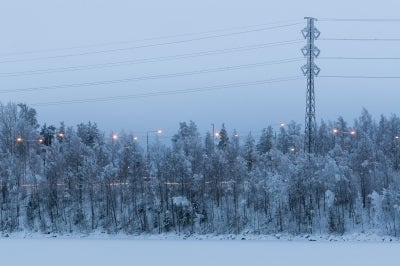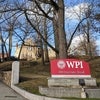Constraints in natural gas supply could power up electricity prices in coming month
 Photo/FreeDigitalPhotos.net
Winter electric bills expected to rise.
Photo/FreeDigitalPhotos.net
Winter electric bills expected to rise.
In 2012, manufacturer Saint-Gobain's Greendale campus in Worcester converted its energy systems from coal to natural gas. It just made sense, Bradley H. Johnson, vice president of Saint-Gobain Abrasives' North America division, said in an email message. The fuel is far less polluting than coal, and, thanks to U.S. shale deposits, its price was dropping quickly.
This year, though, Johnson said the company is expecting "significant increases in cost" for both natural gas and electricity.
The higher costs are, at least in part, a consequence of Saint-Gobain and other commercial and residential customers' decisions to convert from other kinds of energy to natural gas. Demand for the fuel has risen over the last few years, and the capacity of existing pipelines isn't enough to keep up. New pipeline projects are in the works, but in the meantime, local businesses and the energy companies that serve them are seeking ways to adjust to the rising costs that are expected this winter.
New England uses natural gas to produce about half its electricity, which means the cost of power tracks closely with gas prices. ISO New England, which manages the region's high-voltage power grid, reports that pipeline constraints have brought extreme volatility to the energy market. For example, between December 2013 and February 2014, the total value of the wholesale energy market was about $5.05 billion, compared with $5.2 billion for all of 2012.
To mitigate the rapid price fluctuations and keep the grid operating reliably, ISO New England implemented a special program last year to increase the use of oil as a fuel for power plants, and it's looking to do the same this year.
"The situation has been precarious at times," ISO New England spokeswoman Marcia Blomberg said. "We've had natural gas generators that haven't been able to get fuel."
The utilities covering Central Massachusetts-Unitil for Fitchburg and three surrounding towns, Northern Utilities subsidiary NSTAR for parts of MetroWest, and National Grid for other areas-have not yet set electric rates for the winter, but they say the constrained gas supply will continue to affect the rates they pass on to customers.
"With about half of New England's electricity generation now fueled by natural gas, electric commodity prices are likely to rise again this winter, when increasing constraints on the natural gas supply to the region decrease natural gas availability, causing some generators to not run or to switch over to alternate fuels at times of peak demand," National Grid spokesman Jake Navarro wrote in an email message.
Banking on pipeline projects
Over the longer term, pipeline projects are likely to increase the flow of natural gas into the region. Kinder Morgan is working to bring gas from Pennsylvania to Dracut, and Northeast Utilities recently announced pipeline expansion plans. Both projects could be completed by November 2018.
Blomberg said there's no indication the region will move away from a dependence on natural gas any time soon. She said most power plant projects now in planning stages in New England are gas-fueled, although a sizeable minority are wind-powered.
Meanwhile, conversions of heating systems from oil to natural gas continue. National Grid's Navarro said that even last winter, when natural gas prices were jumping up and down on the spot market, many people saw a big incentive in making the switch, since gas is 40 percent cheaper than oil, on average.
On average, he said, the number of new customers National Grid connects to its natural gas system in Massachusetts rose 14 percent a year over the past five years. For the 2014-2015 fiscal year, the utility projects that the number of new connections will be 66 percent higher than in 2010-2011.
Continuing push for efficiency
Meanwhile, energy consumers can look to efficiency programs offered by the utilities and the state to reduce their costs. In Worcester, Saint-Gobain has added efficient lighting and motors, high-efficiency kilns and compressed air systems, and other energy-saving technology in recent years, Johnson said.
"Saint-Gobain is always looking for ways to reduce consumption of steam, electricity and natural gas through energy conservation projects, which are also partially funded by the local utility companies," he said.
At a smaller Worcester manufacturer, metal fabrication plant Howard Products Inc., owner Martha Hawley said state subsidies for more efficient heating systems have helped. But Hawley said it's been hard to find ways to reduce electricity costs. And she said the higher costs can be daunting because many customers don't understand why Howard's prices are rising when raw materials haven't gotten more expensive.
"What makes it very difficult is when I have to take it into account for my overhead and I have to increase my prices," Hawley said.
In a few years, new supplies of natural gas may resolve the issue, but for now Hawley and countless others will hang on through winter the best they can.









0 Comments